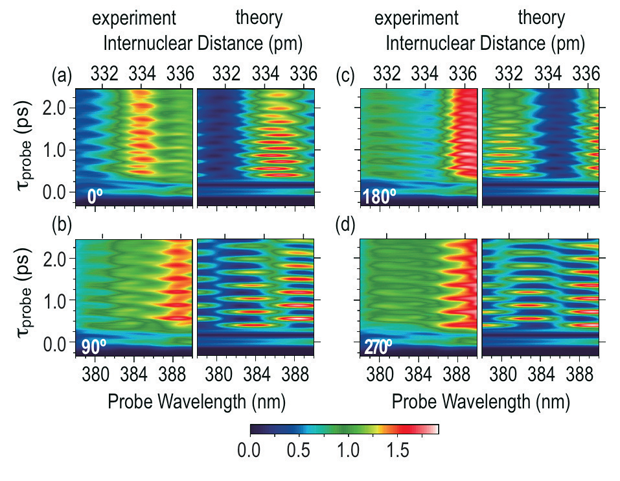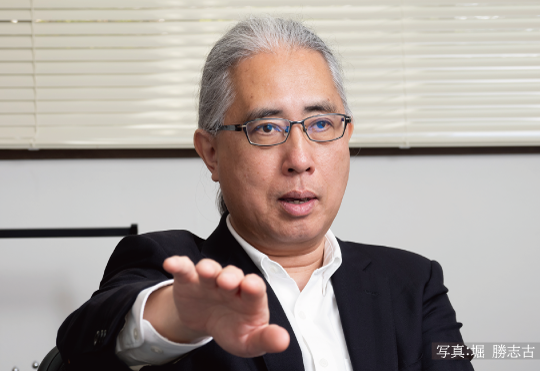Research Theme
Development of an Ultrafast Quantum Simulator with Attosecond Precision and Its Applications to Quantum Computing
Keywords
Attosecond, Quantum Simulator, Quantum Computer
It is observed in a double-slit experiment by Tonomura and coworkers that single electrons recorded as dots on a detector screen build up to show an interference pattern, which is delocalized over the screen.1) This observation indicates that a delocalized wave function of an isolated electron interacts with the screen, which is a bulk solid composed of many nuclei and electrons interacting with each other, and becomes localized in space. This change, referred to as "collapse" in quantum mechanics, is often accepted as a discontinuous event, but a basic question arises: When and how the delocalized wave function becomes localized? Our dream is uncovering this mystery by observing the spatiotemporal evolution of a wave function delocalized over many particles interacting with each other. Having this dream in mind, we have developed coherent control with precisions on the picometer spatial and attosecond temporal scales. Now we apply this ultrafast and ultrahigh-precision coherent control to delocalized wave functions of macroscopic many-particle systems such as an ensemble of ultracold Rydberg atoms and a bulk solid, envisaging the quantum-classical boundary connected smoothly.

Fig.1. Spatiotemporal images of a wave function, which has been designed and visualized in the iodine molecule with precisions on the picometer spatial and attosecond temporal scales. Adopted from ref. 2).
Selected Publications
-
"Visualizing picometric quantum ripples of ultrafast wave-packet interference,” H. Katsuki et al., Science 311, 1589-1592 (2006).
-
"Actively tailored spatiotemporal images of quantum interference on the picometer and femtosecond scales,” H. Katsuki et al., Phys. Rev. Lett. 102, 103602 (2009).
-
"Ultrafast Fourier transform with a femtosecond laser driven molecule,” K. Hosaka et al., Phys. Rev. Lett. 104, 180501 (2010).
Selected for “Editors’ Suggestions” in PRL.
Covered by “Viewpoints” in Physics; Physics 3, 38 (2010).
Covered by “Research Highlights” in Nature; Nature 465, 138-139 (2010).
-
“Strong-laser-induced quantum interference,” H. Goto et al., Nature Physics 7, 383-385 (2011).
Highlighted by “News and Views” in Nature Physics 7, 373-374 (2011).
Highlighted by "Research Highlights" in Nature Photonics 5, 382–383 (2011).
-
"All-optical control and visualization of ultrafast two-dimensional atomic motions in a single crystal of bismuth,” H. Katsuki et al., Nature Commun. 4, 2801 (2013).
-
"Direct observation of ultrafast many-body electron dynamics in an ultracold Rydberg gas,” N. Takei et al., Nature Commun. 7, 13449 (2016).
-
"Ultrafast coherent control of condensed matter with attosecond precision,” H. Katsuki et al., Acc. Chem. Res. 51, 1174-1184 (2018).
-
"Attosecond control of restoration of electronic structure symmetery,” C. Liu et al., Phys. Rev. Lett. 121, 173201 (2018).
-
"Ultrafast creation of overlapping Rydberg electrons in an atomic BEC and Mott-insulator lattice,” M. Mizoguchi et al., Phys. Rev. Lett. 124, 253201 (2020).
-
"Ultrafast energy exchange between two single Rydberg atoms on a nanosecond timescale,” Y. Chew et al., Nature Photonics 16, 724–729 (2022).
-
“Picosecond-scale ultrafast many-body dynamics in an ultracold Rydberg-excited atomic Mott insulator,” V. Bharti et al., Phys. Rev. Lett. 131, 123201 (2023).
-
“Strong spin-motion coupling in the ultrafast dynamics of Rydberg atoms,” V. Bharti et al., Phys. Rev. Lett. 133, 093405 (2024).



